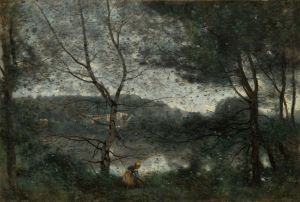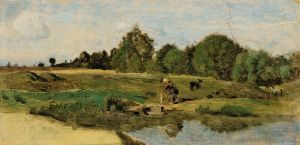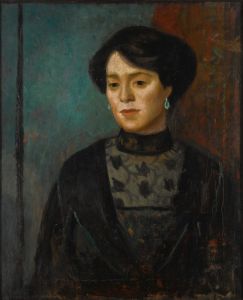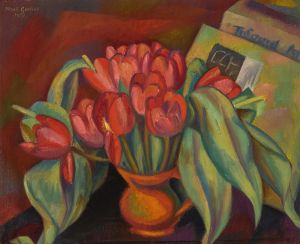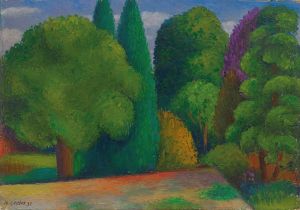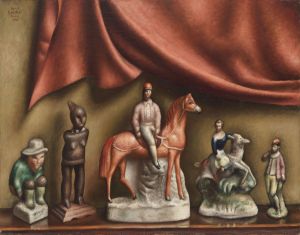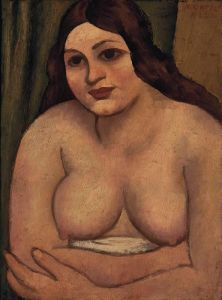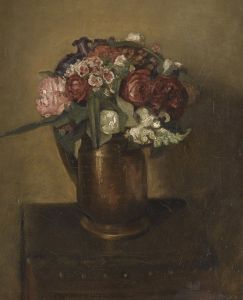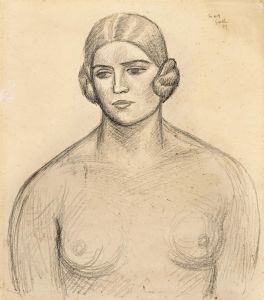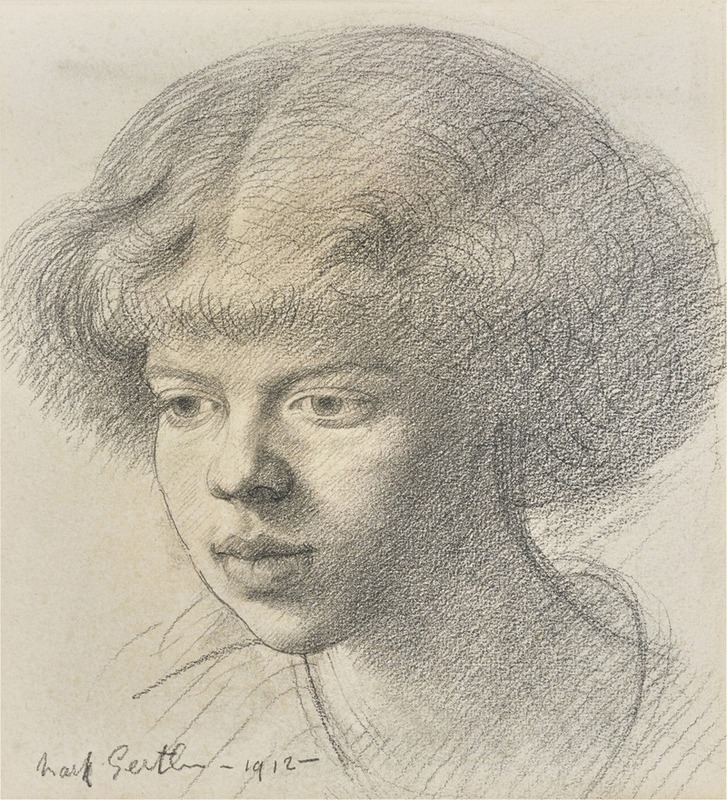
Study for The Violinist
A hand-painted replica of Mark Gertler’s masterpiece Study for The Violinist, meticulously crafted by professional artists to capture the true essence of the original. Each piece is created with museum-quality canvas and rare mineral pigments, carefully painted by experienced artists with delicate brushstrokes and rich, layered colors to perfectly recreate the texture of the original artwork. Unlike machine-printed reproductions, this hand-painted version brings the painting to life, infused with the artist’s emotions and skill in every stroke. Whether for personal collection or home decoration, it instantly elevates the artistic atmosphere of any space.
Mark Gertler's "Study for The Violinist" is an intriguing piece of art that reflects the unique style and thematic concerns of the British painter. Gertler, born in 1891 in London to Polish-Jewish immigrants, was a prominent figure in the early 20th-century British art scene. He was associated with the Bloomsbury Group and was known for his distinctive approach to modernism, often infusing his works with emotional intensity and vivid color.
"Study for The Violinist" is a preparatory work for one of Gertler's more famous paintings, "The Violinist," which was completed in 1912. This study provides insight into Gertler's creative process, showcasing his attention to detail and his ability to capture the essence of his subjects. The study likely served as a preliminary exploration of composition, form, and color, allowing Gertler to experiment with different elements before committing to the final piece.
The subject of the study, a violinist, reflects Gertler's interest in music and its emotional resonance. Music was a recurring theme in his work, often symbolizing a deeper emotional or spiritual experience. In "Study for The Violinist," Gertler captures the intensity and concentration of the musician, possibly drawing parallels between the act of creating music and the act of painting.
Gertler's style is characterized by bold lines and vibrant colors, and this study is no exception. His use of color and form creates a dynamic composition that draws the viewer's eye and evokes a sense of movement and rhythm, much like the music being played by the violinist. This approach is indicative of Gertler's broader artistic philosophy, which sought to convey emotion and narrative through visual means.
The early 20th century was a period of significant change and experimentation in the art world, and Gertler was at the forefront of this movement in Britain. He was influenced by Post-Impressionism and the works of artists like Paul Cézanne and Vincent van Gogh, as well as by the burgeoning modernist movement. These influences are evident in "Study for The Violinist," where Gertler combines traditional techniques with modernist sensibilities.
Gertler's personal life and experiences also played a role in shaping his art. As a Jewish artist in early 20th-century Britain, he faced challenges related to his identity and heritage, which often informed the themes and subjects of his work. His relationship with fellow artists and intellectuals, including his tumultuous friendship with the writer D.H. Lawrence, also influenced his artistic development.
"Study for The Violinist" is a testament to Gertler's skill as a draftsman and his ability to convey complex emotions through his art. It remains an important piece for understanding his oeuvre and the broader context of British modernism. Gertler's work continues to be studied and appreciated for its emotional depth and its contribution to the development of modern art in Britain.






